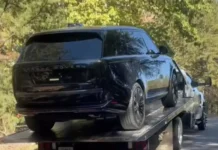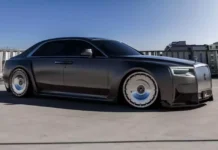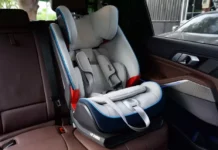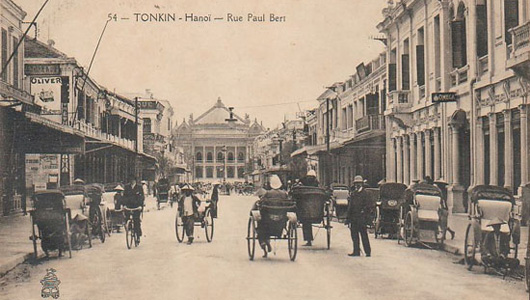The first car in Hanoi? Who was the first Hanoian to own a car? When did the convertible sports car appear in Hanoi? How expensive were cars in Hanoi at the beginning of the last century? … These are very interesting stories about the history of car play in the capital.
The first cars in Hanoi
According to some recorded documents, the first car appeared in Hanoi in 1901. The owner of this steam-powered car was a French priest named Puginier.
In 1906, Asiatic Petrolium opened the first retail store in Phuc Tan (near Long Bien Bridge), which opened up opportunities for cars to enter Hanoi. Also in this year, the owner of the Omnium hand-drawn cart manufacturing facility, a Frenchman, had two Prima 4 cars, which he used for 2 years before selling them.
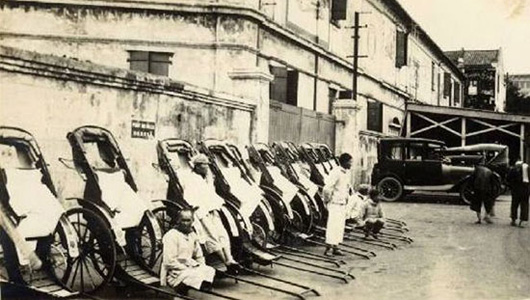 The rare first cars appeared in Hanoi
The rare first cars appeared in Hanoi
In 1913, the first person in Hanoi to buy a car was national bourgeois Bui Thai Buoi. It was a Peugeot petrol car priced at 1 million francs (a type of banknote issued by the Indochina Bank for use in Indochina). Therefore, after 18 years since the gasoline-powered car was invented in 1885 in Germany, the first person in Hanoi owned a gasoline-powered car.
According to the documentation of Mr. Nguyen Van Uan, author of the 3-volume book “Hanoi in the first half of the 20th century”, at that time Hanoi had about 30 cars owned by the French and Vietnamese. That number is quite consistent with the figures announced by Phu Nu Tan Van on July 6, 1933.
The history of the exorbitant car prices
In 1917, French-language newspapers published in Hanoi featured car advertisements, such as Citroen offering installment payments for 12 months, Peugeot selling the 12-SX 4-seat model.
In 1920, the price of a car was about 33 million francs (equivalent to 8,000 Indochinese silver coins and 1 catty of rice at that time was about 6 silver coins).
The reason for the high car prices was that the government only allowed cars produced in France to be imported and prohibited the import of cars from Germany, Italy or the United States, so French car manufacturers monopolized the market and inflated prices for buyers.
In 1921, although cars from the United States, Italy and England were subject to a 50% import tax, they were sold cheaply to compete, forcing French car manufacturers to reduce prices to only 13 million francs.
Since the beginning of the century, car prices in Hanoi have been sky-high, so there are not many cars on the street
On the present-day Phan Chu Trinh Street (formerly Ngo Gia Tu Automobile Factory, now Company 1-5 Automobiles) in the 1930s, there was Aviat et Compagnie’s garage, which was a Ford and Citroen dealer and a Solex motorcycle dealership. The garage was established by a French capitalist in the early 1910s and originally specialized in the production of horse-drawn carriages and blacksmithing at Hang Voi Street. In 1925, during the colonial exploitation of the French colonialists, AVIA grew rapidly, with 160 workers repairing and producing spare parts for cars and assembling cars. Because of this expansion, AVIA moved from Hang Voi to 18 Phan Chu Trinh Street until now.
At the end of the 1920s and 1930s, AVIA became a fairly powerful automobile factory, but the workers working in the factory, most of whom were Vietnamese, were treated very badly by the owners. Therefore, the struggle and resistance movements of the workers appeared quite early. However, it was not until the establishment of the Revolutionary Youth Organization, later the Communist Party organizations, that the struggle of AVIA workers became more determined and comprehensive. An example is the mass strike of the entire factory in May 1929 demanding wage increases, reduced working hours, and no physical abuse of workers, initiated by the Red Union (later comrade Ngo Gia Tu, one of the founders of the first Communist group at 5 Ham Long Street, directly commanded) was responded by 160 AVIA workers.
The high car prices and the need to pay road taxes while the income of the inner-city residents was still low were reasons why the number of cars increased slowly. For example, in 1921, Hanoi had 4,721 stores, of which 3/4 paid taxes below the minimum level (10 Indochinese silver coins), only 2 stores paid taxes of 300 coins per month, until 1941, the number of stores remained the same, however, 10% of them paid taxes accounting for up to 50%. Therefore, only the rich could afford to buy cars.
The car players of Hanoi
From the beginning of the century, Hanoi had emerged renowned “car players”. Most of them were wealthy bourgeoisie, high intellectuals, and merchants.
Dr. Ho Dac Di went to study in France in 1918 and returned to Vietnam in 1932. After a period of time in Hue and then Quy Nhon, Dr. Di went to Phu Doan Hospital and was one of only 3 doctors (including 2 French doctors) in Indochina at that time. Due to the very high salary, in 1932, Dr. Di bought a Peugeot car. This car is still owned by car collectors in Hanoi. The side of the car still has the words: Dr Ho Dac Di.
The first sports car player in Hanoi was Mr. Nguyen Dinh Duong (at 38 Le Thai To Street). Mr. Duong, the son of Mr. Han Lien, the first antique player in Hanoi and also a famous antique dealer, bought a Renault sports car in 1943.
Mr. Trinh Duc Kinh, owner of Thanh Duc Glass Company, famous throughout Indochina and Thanh Duc glass products were not only exported to Laos and Cambodia but also to Morocco and Algiers had a Citroen car. His sister-in-law, the owner of Minh Nam Machinery Company on Kham Thien Street, owned 2 cars, one Citroen and one Peugeot.
 1932 Peugeot car appeared in Hanoi
1932 Peugeot car appeared in Hanoi
The Hoa Tuong family on Kham Thien Street also played a Ford Acbas convertible.
Mr. Trinh Van Can, owner of Cuo Doanh Textile Company, owned a Peugeot.
Tu Van Wedding Car Rental House on Hang Bong Street had a Ford convertible.
Dr. Hien Nhan, Chairman of Tia Sang Newspaper, also had a Renault 4-horse car.
There was a garage specializing in exporting silk to France on Hang Trong Street that bought a luxurious Ford, used for 2 years, and then sold it to a relative of the Lao royal family in 1948.
In 1944, when World War II escalated, oil became scarce, the two oil companies supplying oil to Vietnam, Shell and Conony, reduced production, so importers could not import goods. As a result, most cars had to be parked, and trucks had to convert their engines to run on firewood. This situation lasted until 1945.
During the 9-year resistance war against the French, Hanoi had 4 gas stations: Khâm Thiên Street, Bát Sứ Street, Trần Quang Khải Street, Hai Bà Trưng Street. Hanoi had a driving school on Tran Quoc Toan Street called “Hanoi Automobile”, the school had 2 Jeep cars for teaching students.
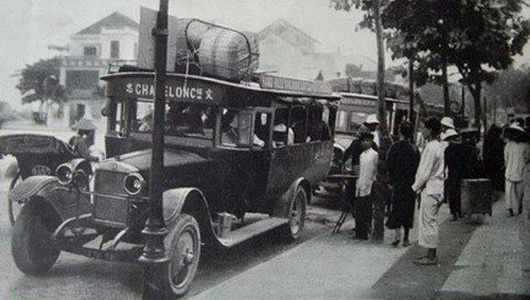 A bus station in Hanoi in the early 20th century
A bus station in Hanoi in the early 20th century
During this time, Hanoi had 2 garages: Simca (at the end of Hai Ba Trung Street now) and Crytal at the location of the current ice factory. Since the first floor of stores on busy streets such as Hang Duong, Hang Dao, Hang Gai, Hang Bong… were used as shops, houses with cars on these streets had to park in front of Hồa Lò Prison at night.
Thế Đạt (TTTD/Tong hop)









